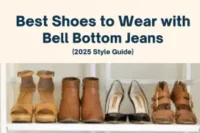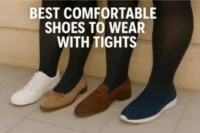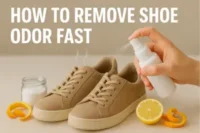Best Running Shoes for Big Toe: Find Your Perfect Fit
Published: 29 Jul 2025
Let’s Begin
Does your big toe hurt after running? You’re not alone. Many runners feel pain or pressure in their big toe because their shoes are too tight in the front. Some deal with bunions, some with joint stiffness, and others just need more space for their toes. The right running shoes can fix this.
In this guide, you’ll find the best running shoes for big toe pain, wide feet, bunions, and more. Whether you’re new to running or experienced, this will help you choose shoes that feel good and support your feet. Let’s make running more comfortable—starting now.
1. Why Big Toe Comfort Matters in Running
Your big toe plays a big role when you run. It helps you balance, push off, and move forward. But if that toe hurts, everything feels harder. Imagine trying to run with a swollen big toe—it’s painful and frustrating.
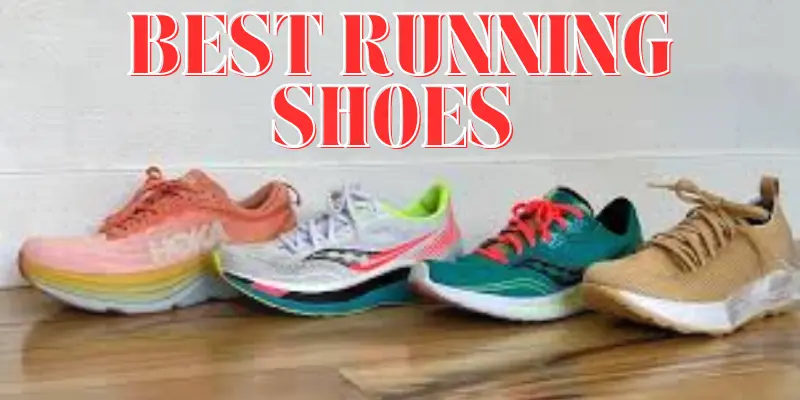
Many runners deal with problems like bunions, hallux rigidus (a stiff toe joint), or toe joint pain. These issues can get worse if your shoes are too tight or don’t have enough space in the toe box. That’s why finding the best running shoes for big toe pain matters. The right shoes give your toes room, support, and relief.
2. Top Features to Look For
To protect your big toe while running, the right shoe features are key. Here’s what to look for:
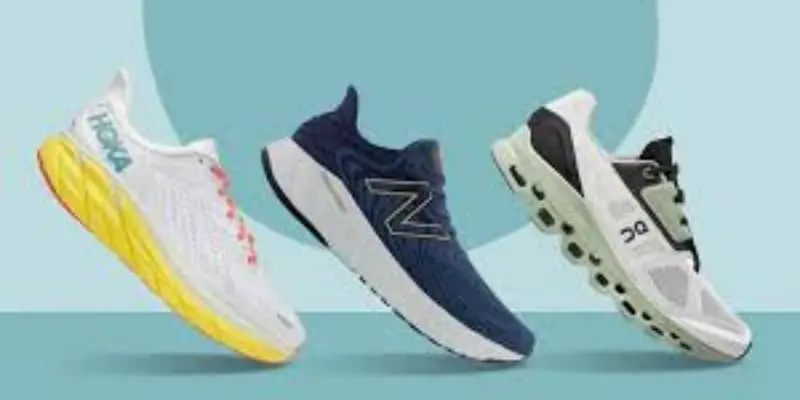
- Wide Toe Box – Your toes need room to spread. A wide toe box stops rubbing and keeps pressure off the big toe.
- Cushioned Forefoot – Extra padding under the front of your foot helps ease joint pain and absorb shock.
- Flexible Upper – A soft, stretchable top lets your foot move freely without tight spots.
- Arch and Heel Support – Good support keeps your foot stable and reduces strain on the toe.
- Toe Spring – This is a small upward curve at the front of the shoe. It helps your foot roll forward easily, so your big toe doesn’t have to bend too much.
These features work together to give you a smoother, pain-free run.
3. Best Running Shoes for Big Toe Comfort (Top Picks)
If your big toe hurts when you run, the right shoes can help a lot. Here are the best options, based on what your feet need most:
🥇 Best Overall: Brooks Glycerin 21
The Brooks Glycerin 21 gives soft cushioning and a roomy toe box. It fits well and feels great for daily running. If your big toe needs extra space and comfort, this is a strong all-around pick. It also comes in wide sizes.
👣 Best for Wide Feet: New Balance Fresh Foam 1080v13 (Wide)
The Fresh Foam 1080v13 has a wide fit and soft feel. It gives your toes room to move and helps ease pressure in the front of your foot. Runners with wide feet and big toe pain will find this model very comfortable.
🦶 Best for Bunions: Hoka Clifton 9 (Wide)
The Hoka Clifton 9 is soft and light. In the wide version, it has extra toe space and a smooth upper that won’t press on bunions. Its rocker shape also helps your foot roll forward without too much toe bending.
🟰 Best Zero-Drop Option: Altra Torin 7
The Altra Torin 7 keeps your foot flat from heel to toe. This takes pressure off your big toe joint. Its wide, foot-shaped toe box lets your toes spread out. Great for runners with stiff toes or bunion pain.
💰 Best Budget-Friendly: ASICS Gel-Excite 10 (Wide)
If you want comfort at a good price, try the ASICS Gel-Excite 10. It’s soft underfoot and comes in wide sizes. It won’t have all the fancy features, but it’s a good choice for everyday runners with mild toe pain.
Each of these shoes helps protect your big toe by giving it space, support, and a softer landing. Pick the one that fits your needs—and your feet will thank you.
4. Fit Tips: How to Choose the Right Size
The right fit can make or break your run—especially if your big toe is hurting. Here’s how to find the best size for comfort and support:
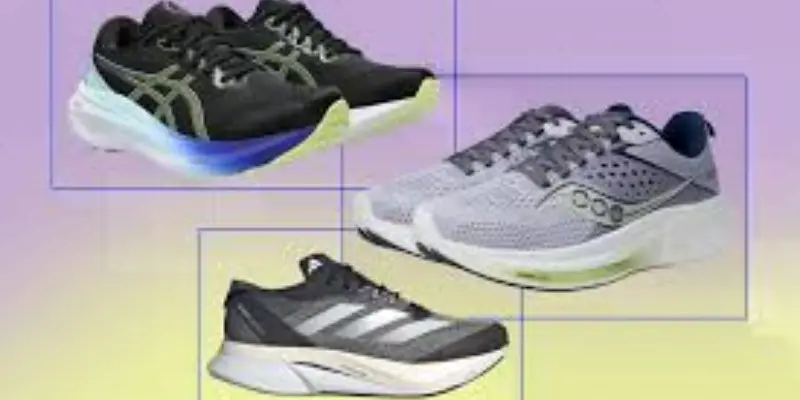
📏 Measuring Your Foot at Home
Stand on a sheet of paper, trace your foot, and measure from heel to toe. Do this at the end of the day when your feet are slightly swollen, just like they get during a run. Use these numbers to check the brand’s sizing guide.
👟 Wide Size or Half-Size Up?
If your toes feel tight, don’t just go up a half-size. That adds length, not width. Try a wide version of the shoe instead. A wider toe box gives your big toe more space without making the shoe too long.
🧍♂️ Real Example
Jake loved his Hoka Clifton 9, but his big toe felt pinched. At first, he went up half a size. It helped a little, but the shoe felt too long. Then he tried the wide version in his normal size—and the toe pain was gone.
A good fit means more comfort and less pain. Always check the width, not just the length. Your toes will thank you.
5. How Toe Spring Affects Your Run
Toe spring is the slight upward curve at the front of a running shoe. It helps your foot roll forward with less effort. Instead of forcing your big toe to bend a lot, the shoe does some of the work for you.
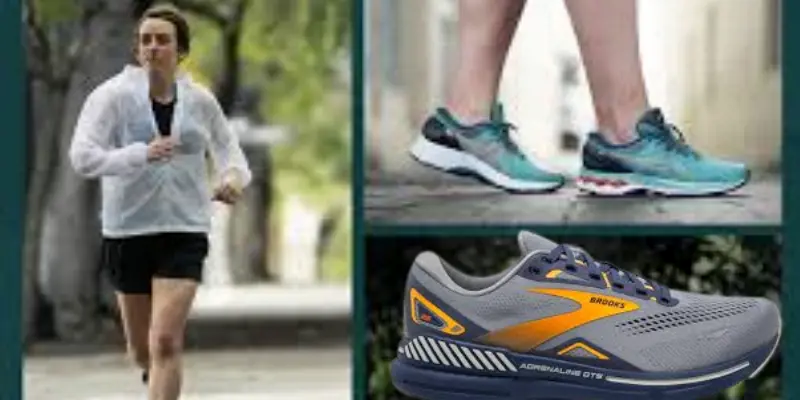
👟 Why It Matters
If you have a stiff big toe or joint pain, toe spring takes pressure off that area. It makes each step feel smoother and reduces strain on your forefoot.
🏃♂️ Who It Helps
- Forefoot strikers who land on the ball of their foot
- Runners with hallux rigidus or stiff toe joints
- Anyone with toe pain who needs a smoother step
Toe spring may seem small, but it can make a big difference—especially if your big toe needs extra help during your run.
6. Break-In Period: What to Expect
Even the best shoes need a little time to feel just right—especially if you’re choosing them for big toe comfort.
👟 Why Breaking In Matters
New shoes can feel stiff at first. If you have toe pain, tightness in the front can cause more pressure or rubbing. Giving your shoes a few runs to loosen up helps the toe box stretch and mold to your foot shape.
✅ Try This Tip
Try on your new shoes mid-day or in the evening—that’s when your feet are slightly swollen, like they get during a run. This helps you get a better idea of how the shoe will feel in real use.
Give your feet time to adjust. A few short runs at the start can help break in the shoes gently—so your big toe stays happy.
7. Mistakes to Avoid
Choosing the wrong shoes can make your big toe pain worse. Here are a few mistakes runners often make—and how to avoid them:
❌ Buying Just for the Brand
A well-known brand doesn’t always mean the shoe is right for you. Some popular models have tight toe boxes. Always check the shape and fit, not just the logo.
❌ Ignoring Width Options
Going up half a size won’t fix a narrow toe box. If your toes feel squeezed, look for the wide or extra-wide version instead. It gives your big toe the room it needs.
❌ Choosing Style Over Support
Trendy shoes might look great, but they’re not always made for comfort. Pick shoes that feel good and fit well, especially if you have bunions or toe joint pain.
Smart choices now mean fewer problems later—so don’t let these common mistakes slow you down.
8. Final Takeaway
The right running shoes can take the pain out of every step. With a wide toe box, soft forefoot, and proper support, your big toe gets the space and comfort it needs.
Pay attention to how your feet feel. If your toes feel sore or squeezed, it’s time to switch. Your feet will tell you what they need—just listen. A good pair of shoes doesn’t just protect your toe. It helps you run better, longer, and without pain.
9. Questions & Answers
Got big toe pain while running? Here are some quick answers to common questions runners ask.
Yes, you can—but the right shoes are a must. Look for running shoes with a toe spring, wide toe box, and soft forefoot cushioning. These features help reduce bending and ease pressure on the big toe. If the pain gets worse, it’s smart to check in with a doctor.
Not always. Some runners do fine with built-in support from the right shoes. However, if your feet feel sore or you have flat arches or uneven pressure, custom insoles can help reduce stress on your big toe and maintain a balanced stride.
Replace your running shoes every 300 to 500 miles. After that, the cushioning wears down—even if the shoes still look good. Worn shoes can lead to pain in the toes, arches, or heels. If your feet start hurting, it may be time for a fresh pair.
Taking care of your feet starts with the right shoes and the right info.

- Be Respectful
- Stay Relevant
- Stay Positive
- True Feedback
- Encourage Discussion
- Avoid Spamming
- No Fake News
- Don't Copy-Paste
- No Personal Attacks



- Be Respectful
- Stay Relevant
- Stay Positive
- True Feedback
- Encourage Discussion
- Avoid Spamming
- No Fake News
- Don't Copy-Paste
- No Personal Attacks


